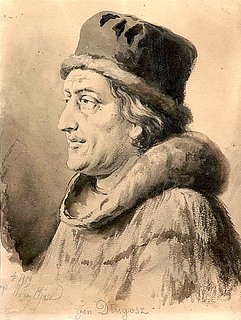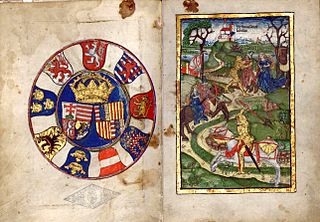 W
WDervish Ahmed, better known by his pen name Âşıki or family name Aşıkpaşazade, was an Ottoman historian, a prominent representative of the early Ottoman historiography. He was a descendant of mystic poet dervish Aşık Pasha (1272–1333). He was born in the region of Amasya and studied in various Anatolian towns before going to Hadj and stayed some time in Egypt. He later took part in various Ottoman campaigns, such as the Battle of Kosovo (1448), Fall of Constantinople and witnessed the circumcision festivities of Mustafa and Bayezid II the sons of Mehmed the Conqueror. Later in his life he started to write his famous history work Tevārīḫ-i Āl-i ʿOsmān.
 W
WAntonio Beccadelli (1394–1471), called Il Panormita, was an Italian poet, canon lawyer, scholar, diplomat, and chronicler. He generally wrote in Latin. Born at Palermo, he was the eldest son of the merchant Enrico di Vannino Beccadelli, who had played an active role in Sicilian politics, serving as Praetor of Palermo in 1393.
 W
WBernardino of Fossa was an Italian Franciscan historian and ascetical writer.
 W
WFlavio Biondo was an Italian Renaissance humanist historian. He was one of the first historians to use a three-period division of history and is known as one of the first archaeologists. Born in the capital city of Forlì, in the Romagna region, Flavio was well schooled from an early age, studying under Ballistario of Cremona. During a brief stay in Milan, he discovered and transcribed the unique manuscript of Cicero's dialogue Brutus. He moved to Rome in 1433 where he began work on his writing career; he was appointed secretary to the Cancelleria under Eugene IV in 1444 and accompanied Eugene in his exile in Ferrara and Florence. After his patron's death, Flavio was employed by his papal successors, Nicholas V, Callixtus III and the humanist Pius II.
 W
WAntonio Bonfini (1427‒1502) was an Italian humanist and poet who spent the last years of his career as a court historian in Hungary with King Matthias Corvinus.
 W
WWalter Bower was a Scottish canon regular and abbot of Inchcolm Abbey in the Firth of Forth, who is noted as a chronicler of his era. He was born about 1385 at Haddington, East Lothian, in the Kingdom of Scotland. In 1991, Donald Watt said of Bower's Scotichronicon that "We are more and more convinced that this book is one of the national treasures of Scotland, which should be studied in depth for many different kinds of enquiry into Scotland's past."
 W
WLaonikos Chalkokondyles, Latinized as Laonicus Chalcocondyles. Incidentally Chalcokondyles is from χαλκος "brass",and κονδυλος "knuckle". He was a Byzantine Greek historian from Athens. He is known for his Histories in ten books, which record the last 150 years of the Byzantine Empire.
 W
WJan Długosz, also known in Latin as Johannes Longinus, was a Polish priest, chronicler, diplomat, soldier, and secretary to Bishop Zbigniew Oleśnicki of Kraków. He is considered Poland's first historian.
 W
WGiacomo Filippo Foresti da Bergamo (1434–1520) was an Augustinian monk, known as the author of several significant early printed works. He was a chronicler and Biblical scholar.
 W
WIacopo da San Cassiano, also known as Iacobus Cremonensis, was an Italian humanist and mathematician. He translated from Greek to Latin the writings of Archimedes and parts of Diodorus' Bibliotheca historica.
 W
WIdris Imad al-Din was the 19th Tayyibi Isma'ili Dāʿī al-Muṭlaq and a major religious and political leader in 15th-century Yemen, as well as a notable theologian and the most important medieval Isma'ili historian. His work is fundamental for the history of the Fatimid Caliphate and the Isma'ili communities in Yemen.
 W
WJudah ibn Verga was a Spanish historian, kabalist, perhaps also mathematician, and astronomer, of the 15th century, born at Seville. He is supposed to have been the grandfather of Solomon ibn Verga, author of the Shebeṭ Yehudah, and it is this work which furnishes some details of Ibn Verga's life.
 W
WŞemseddin Ahmed (1469–1534), better known by his pen name Ibn Kemal or Kemalpaşazâde, was an Ottoman historian, Sheikh ul-Islam, lawyer and poet.
 W
WFernão Lopes was a Portuguese chronicler appointed by King Edward of Portugal. Fernão Lopes wrote the history of Portugal, but only a part of his work remained.
 W
WEnguerrand de Monstrelet, was a French chronicler. He was born in Picardy, most likely into a family of the minor nobility.
 W
WUlrich of Richenthal was a chronicler of the Council of Constance.
 W
WJean le Fèvre de Saint-Remy or Jean Lefebvre de Saint-Remy born in Abbeville, was a Burgundian chronicler during the Hundred Years' War and lord (seigneur) of Saint Remy, la Vacquerie, Avesnes and Morienne. He is also known by the formal title of authority Toison d'or because he served as the King of Arms to the Order of the Golden Fleece.
 W
WSharaf ad-Din Ali Yazdi or Sharif al-Din Ali’ Yazdi, also known by his pen name Sharaf, was a 15th-century Persian scholar who authored several works in the arts and sciences, including mathematics, astronomy, enigma, literature such as poetry, and history, the Zafarnama, a life of Timur, being his most famous(539). He was born in the affluent city of Yazd, Iran in the 1370s. He devoted much of his life to scholarship, furthering his education in Syria and Egypt until Timur's death in 1405 (1,19).
 W
WAl-Suyuti ; aka Jalaluddin; was an Egyptian scholar, historian and jurist. From a family of Persian origin, he was described as one of the most prolific writers of the Middle Ages. His biographical dictionary Bughyat al-wuʻāh fī ṭabaqāt al-lughawīyīn wa-al-nuḥāh contains valuable accounts of prominent figures in the early development of Arabic philology. He was appointed to a chair in the mosque of Baybars in Cairo in 1486, and was an authority of the Shafii school of thought (madhhab).
 W
WThomas of Metsoph (1378–1446) was an Armenian cleric and chronicler who left an account of Timur’s invasions of the Caucasus (1386–1403). What we know of Thomas's life comes from a biography written by his student Kirakos Banaser and from a number of 15th-century colophons.
 W
WJohannes de Thurocz, was a Hungarian historian and the author of the Latin Chronica Hungarorum, the most extensive 15th-century work on Hungary, and the first chronicle of Hungary written by a layman.
 W
WGomes Eanes de Zurara, sometimes spelled Eannes or Azurara, was a Portuguese chronicler of the Age of Discovery, the most notable after Fernão Lopes.